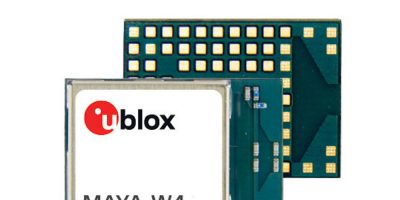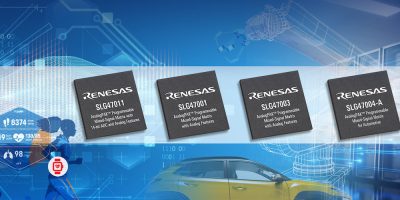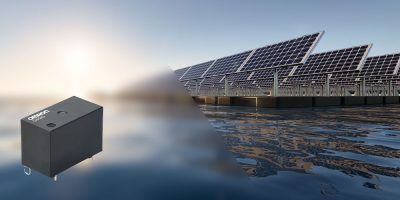u-blox has announced the launch of the MAYA-W4, a tri-radio module that delivers the latest in wireless connectivity technologies for the mass market. With support for dual-band Wi-Fi 6, Bluetooth Low Energy 5.4, and 802.15.4 (for Thread supporting Matter), the MAYA-W4 is set to redefine the landscape of IoT applications in diverse industries, enhancing device connectivity and interoperability.
Combining three of the most critical wireless technologies into a compact, power-efficient module, the versatile MAYA-W4 meets the growing demand for reliable and secure connectivity. Whether enabling low-energy mesh networks for smart homes or providing high-speed Wi-Fi 6 connectivity for industrial tools, the MAYA-W4 offers unparalleled flexibility for developers and manufacturers. Its small size and robust design make it ideal for space-constrained applications, while its comprehensive global certifications ensure seamless deployment across regions.
The MAYA-W4 addresses the market’s need for Wi-Fi 6 solutions, driven by the rapid adoption of Wi-Fi 6 in IoT segments, as highlighted by recent market data from TSR* (Techno Systems Research CO. LTD.). It alleviates network congestion, enhances power efficiency, and, with a temperature range of -40°C to +85°C, is suitable for industrial environments. With its entry-level feature set and optimised data throughput, the MAYA-W4 offers cost-efficient connectivity without compromising performance. The inclusion of 802.15.4 enables low-power IoT and mesh networking, providing a gateway for the next generation of smart, connected devices.
The new module also eases design efforts, enabling manufacturers to scale their device designs for current and future markets. Offering a selection of antenna variants, designers can choose between pin(s) out, embedded antenna, or U.FL. connector(s) configuration. By maintaining the same compact dimensions as its predecessors (10 x 14 x 1.9 mm), u-blox simplifies migration across previous generations.
Sector News
Renesas introduces new AnalogPAK programmable mixed-signal ICs
Renesas has announced new AnalogPAK ICs, including lower power and automotive-qualified devices along with the industry’s first programmable 14-bit SAR ADC (Successive-Approximation Register Analog-Digital Converter).
AnalogPAK devices are part of Renesas’ GreenPAK Family of Programmable Mixed-Signal Matrix products: cost-effective, NVM programmable devices which enable innovators to integrate many system functions while minimising component count, board space, and power consumption. GreenPAK and AnalogPAK ICs deliver functional replacement of mixed-signal standard products and stand-alone discrete circuits. They also provide reliable hardware supervisory functions for SoCs and microcontrollers. GreenPAK and AnalogPAK devices provide benefits for virtually any application, including consumer electronics, computing, white goods, industrial, communications, and automotive. Using Go Configure Software Hub and the GreenPAK Development Kit, designers can create and program a custom circuit in minutes.
Renesas’ new SLG47011 AnalogPAK device delivers a new level of performance for configurable analog integrated circuits. It includes a rich set of digital and analog features including programable multichannel 14-bit SAR ADC with Programmable Gain Amplifier (PGA). The SLG47011 also has flexible, user-defined power saving modes for all macrocells that enable designers to switch off some blocks in sleep mode and therefore reduce power consumption to the µA level.
The SLG47011 can be used to extend the performance of, or to offload an MCUs. It can also be used in conjunction with an MCU to replace a complex analog front-end (AFE). Key functions supported by the SLG47011 include measurement, data processing, logic control and data output.
In addition to the SLG47011, Renesas is introducing two other AnalogPAK devices, the cost-optimised SLG47001/3, and the automotive-qualified SLG47004-A.
SLG47001/3 AnalogPAK Devices
The SLG47001 and SLG47003 enable the implementation of precise measurement systems with a low price point and a very compact package to address applications such as gas sensors, power meters, measurement equipment, servers, wearables, industrial robots, industrial and smart home sensor modules.
• Two ultra-low offset op-amps – 9 µV (max.)
• Two 10-bit digital rheostats
• Six-channel sampling comparator
• Analog switch
• Voltage reference
• 59-bytes pattern generator
• 2k/10k/25MHz oscillators
• Fully configurable blocks: LUTs, flip-flops, shift registers, timers, counters, delays
SLG47004-A AnalogPAK Device
The SLG47004-A delivers the functionality of the SLG47004 devices with the addition of automotive qualification Grade 1 for applications such as infotainment, navigation, chassis and body electronics, automotive display clusters and more. The new devices support a temperature range of -40°C to 125°C.
Device Availability
All of the new AnalogPAK devices are available today from Renesas and its authorised distributors, along with customised development kits. The SLG47011 comes in a 2.0 x 2.0 mm 16-pin STQFN package. The SLG47001 is packaged in a 2.0 mm x 3.0 mm 20-pin STQFN, while the SLG47003 comes in a 3.0 mm x 3.0 mm 24-pin STQFN. The SLG47004-A is available in a 4.0 mm x 4.0 mm 24-pin TQFN.
More information on all the new offerings is available at https://www.renesas.com/analogpak.
Web-based tool from ST accelerates AIoT projects with smart sensors
ST AIoT Craft, a new web-based tool from ST, simplifies developing and provisioning node-to-cloud AIoT (Artificial Intelligence of Things) projects that use the machine-learning core (MLC) of ST’s smart MEMS sensors.
The MLC is unique to the ST MEMS portfolio and enables decision-tree learning models to run directly in the sensor. Capable of operating autonomously, without host-system involvement, the MLC ensures low latency with low power consumption and efficiently handles tasks that require AI skills such as classification and pattern detection.
ST AIoT Craft also integrates all the steps needed for developing and provisioning IoT projects that leverage the MLC for in-sensor AI and offers a secure and user-friendly approach. There is robust cyber protection for data in the cloud and the web-based tool is conveniently accessed online without downloading to desktop. This saves time for users as it requires no installation, and eases collaboration between different team members such as as AI specialists and embedded software engineers.
The tool provided for creating decision-tree models includes the AutoML function, which automatically selects optimal attributes, filters, and window size for sensor datasets. This framework also trains the decision tree to run on the MLC and generates the configuration file to deploy the trained model. For beginners it is a quick and easy introduction to ST smart sensors that simplifies developing AI applications. In addition, to provision the IoT project, the gateway can be programmed with the Data Sufficiency Module (DSM) tool that intelligently filters data points for transmitting to the cloud, to optimise communication and minimise power consumption, and facilitates future retraining.
Users can find examples that show how to work with decision trees to build IoT sensor-to-cloud solutions, including fan-coil monitoring, asset tracking, human activity recognition, and head gestures. The examples are ready to flash and run for evaluation in ST reference IoT boards such as SensorTile.box Pro, STWIN and STWIN.box. Users can customise these examples to accelerate their own projects, bringing their own data or enhancing available datasets.
ST AIoT Craft is included in the ST Edge AI Suite repository. This contains all software tools, examples, and models for developing machine-learning algorithms to deploy on ST edge-AI devices such as STM32 microcontrollers (MCUs), Stellar MCUs, and MEMS sensors that contain the MLC or the intelligent sensor processing unit (ISPU).
Omron introduces industry’s smallest 55A power relay with switching capacity
Omron has launched a new high power PCB relay which requires up to 51% less mounting space compared to similar 480VAC 55A relays. Weighing just 18g, the relay requires 488mm2, the G6QG relay can contribute towards significant space savings while delivering high voltage and current endurance. The relay is perfectly suited to high voltage energy infrastructure applications such as electric vehicles (EV) chargers and photovoltaic (PV) inverters.
Despite its small size and low height, the G6QG is capable of high-capacity switching with a contact rating of 480 VAC, 55A. A large contact gap of minimum 2 mm means that the device is compliant with Solar Power Generation Standard IEC62109, while also providing improved insulation between contacts. The G6QG is capable of 10 kV high withstand voltage between coil and contact. Its coil holding voltage, which can be applied as 35%-50% of rated coil voltage, reduces coil power consumption to approximately 12% of rated voltage. Overall power consumption is 1400mW, is also saved as 172mW in case of coil holding voltage 35%.
The profile of the relay is 33% lower than that of competitor products currently on the market and 50% lighter. For designers of energy infrastructure equipment this can contribute towards smaller and lighter boards and devices, or freeing up space for additional capacity or functionality. Examples of suitable applications include solar power generation systems, inverters for solar and energy storage, EV charging stations, industrial inverters, home appliances, and other industrial equipment.
About Smart Cities
This news story is brought to you by smartcitieselectronics.com, the specialist site dedicated to delivering information about what’s new in the Smart City Electronics industry, with daily news updates, new products and industry news. To stay up-to-date, register to receive our weekly newsletters and keep yourself informed on the latest technology news and new products from around the globe. Simply click this link to register here: Smart Cities Registration







